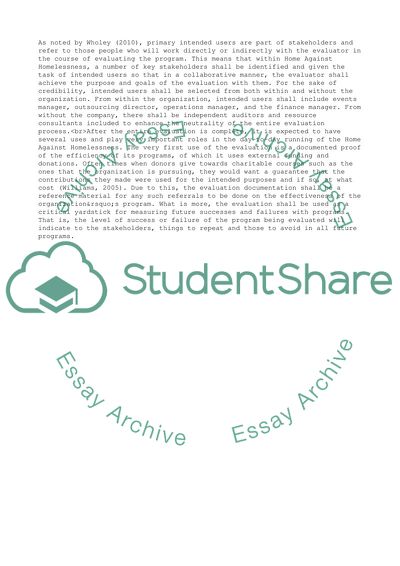Cite this document
(Practical Program Evaluation Case Study Example | Topics and Well Written Essays - 1500 words, n.d.)
Practical Program Evaluation Case Study Example | Topics and Well Written Essays - 1500 words. Retrieved from https://studentshare.org/management/1803379-conduct-an-evaluation-program-evaluation-and-design
Practical Program Evaluation Case Study Example | Topics and Well Written Essays - 1500 words. Retrieved from https://studentshare.org/management/1803379-conduct-an-evaluation-program-evaluation-and-design
(Practical Program Evaluation Case Study Example | Topics and Well Written Essays - 1500 Words)
Practical Program Evaluation Case Study Example | Topics and Well Written Essays - 1500 Words. https://studentshare.org/management/1803379-conduct-an-evaluation-program-evaluation-and-design.
Practical Program Evaluation Case Study Example | Topics and Well Written Essays - 1500 Words. https://studentshare.org/management/1803379-conduct-an-evaluation-program-evaluation-and-design.
“Practical Program Evaluation Case Study Example | Topics and Well Written Essays - 1500 Words”, n.d. https://studentshare.org/management/1803379-conduct-an-evaluation-program-evaluation-and-design.


